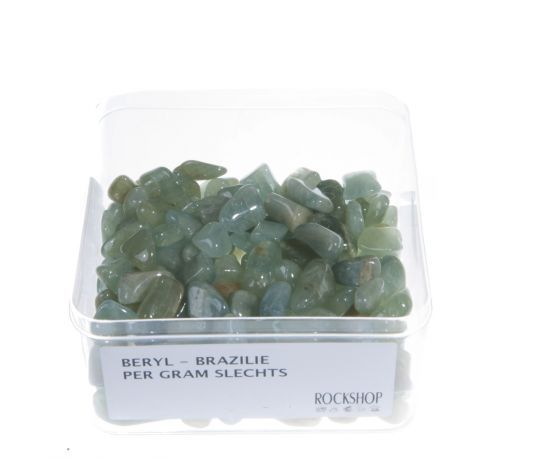We use cookies to make your experience better.
Beryl from southern Brazil
- Buy 100 for €0.19 each and save 24%
Beryl is a mineral. It is a colorless, white, yellowish-white, yellow-green to green, pink, bluish to greenish blue, red or golden yellow aluminum-beryllium silicate. The chemical formula is Al2Be3Si6O18. It belongs to the cyclo silicates. The hardness of the mineral is 7.5 to 8 (brittle) on the Mohs scale and the line color is white. The mineral, in crystal, granular or compact radial aggregates or prevents pebbles, is transparent to translucent and has a glassy matte finish. The density of beryl is 2.63 to 2.80 and it has hexagonal crystal structure. Pliny beryl named after the Greek word berullos (= "aquamarine gemstone with color"). Beryl occur in pegmatites and hydrothermal-pneumatolitische and metamorphic rocks and is quite rare. The type of location is not defined, but a different variety. The mineral is, inter alia, found in the United States (South Dakota, Connecticut), Brazil, Germany and Australia. The greatest berilkristal had a length of 18 meters and was 3.5 meters wide. The applications of the mineral are: raw material beryllium, aerospace, (semi) precious stones (faceted stones, cabochons). In the Middle Ages, it would be mineral, after grinding, are used to improve visual acuity. The word 'seat' is derived. However, according to Pliny looked emperor Nero already an emerald.












